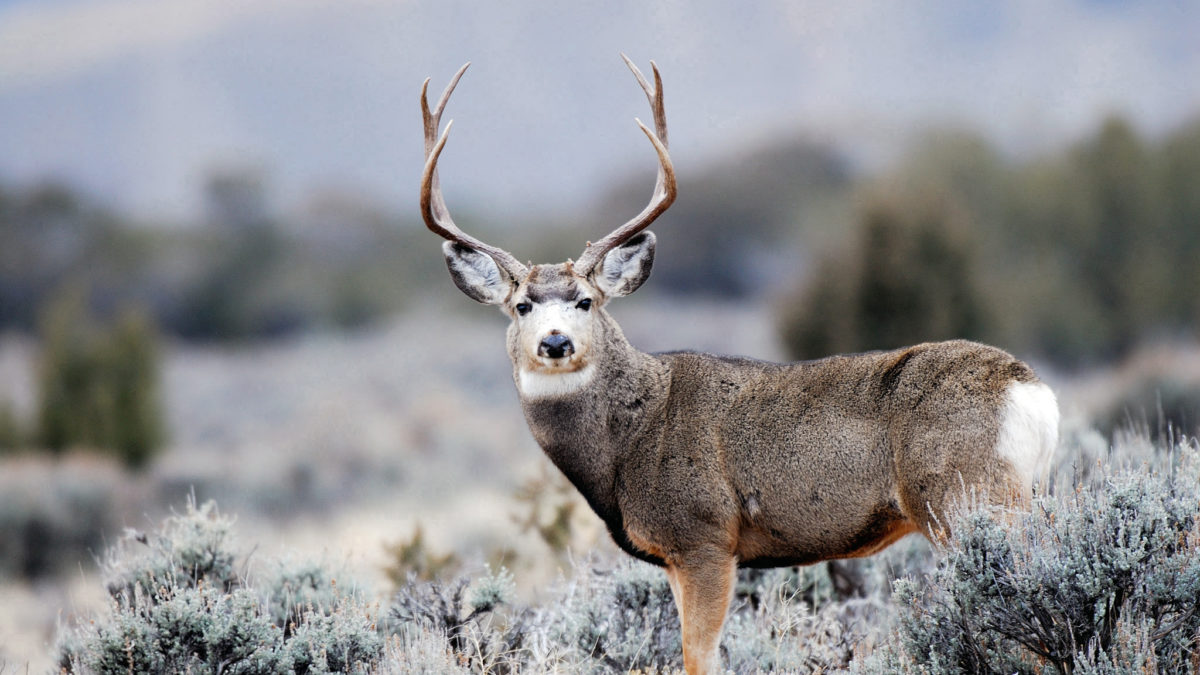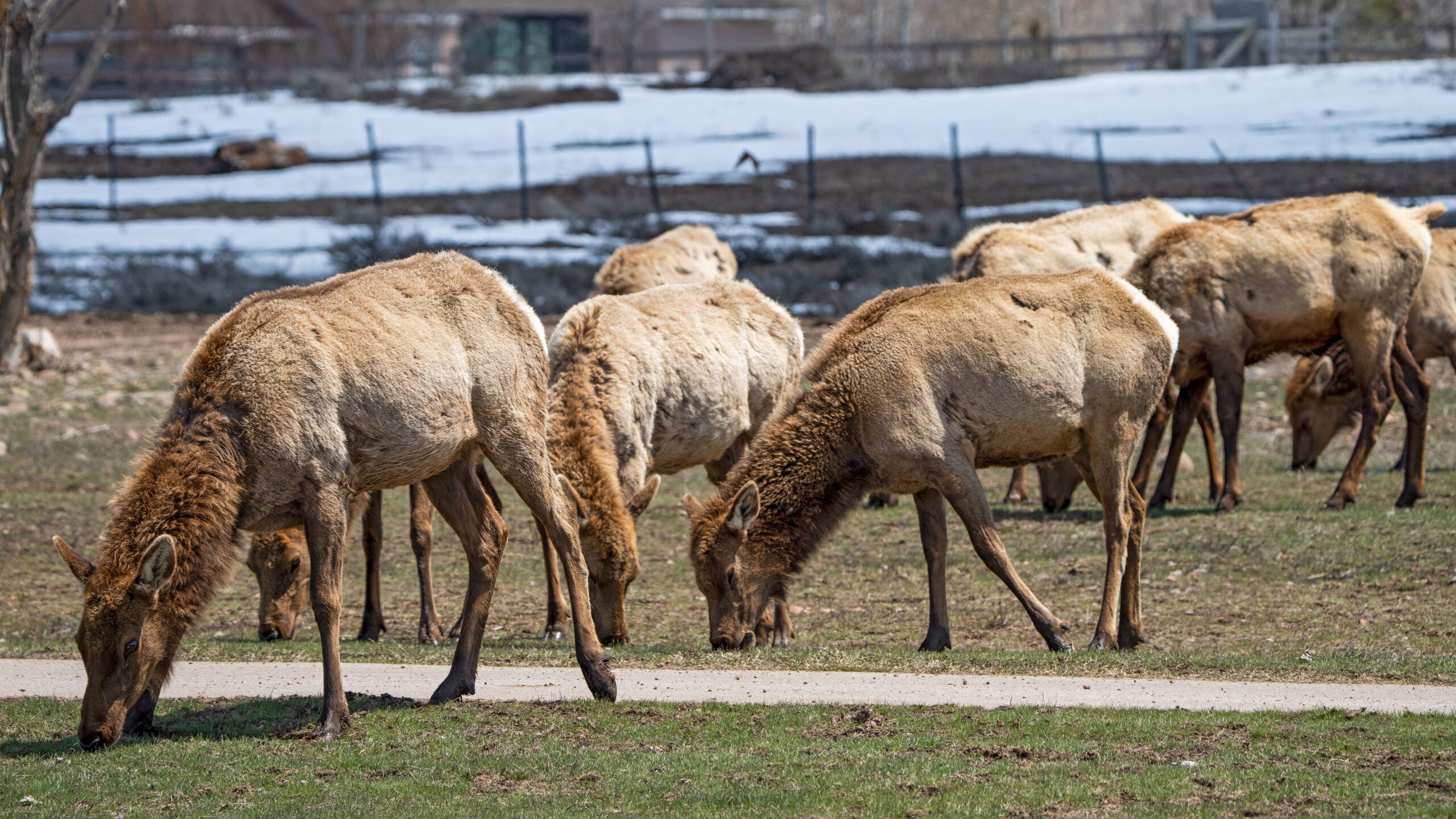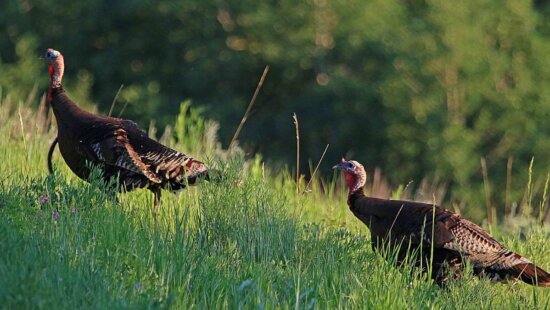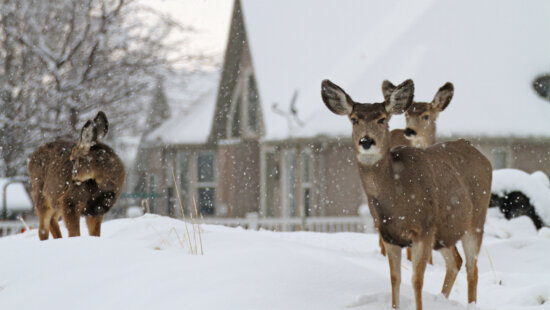Wildlife
DWR: don’t feed deer or other wildlife

Deer have four-part stomachs, and each stomach chamber progressively breaks down woody, leafy and grassy foods into smaller particles. These stomach chambers contain microbes that are essential to digesting food. The type of microbes in a deer’s digestive system gradually change throughout the year and are very specific to the food that is available. Photo: DWR
PARK CITY, Utah — Officials with the Utah Division of Wildlife Resources (DWR) are reminding the public not to feed deer or other wildlife, given public safety concerns, the spread of chronic wasting disease among deer, elk, and moose, and potential harm to wildlife from introducing foods that are not in their diets.
DWR had a busy January. During one week, over a dozen moose had to be relocated, most of them along I-80. On Jan. 3, a mountain lion that was hanging around a Park Meadows home was tranquilized and later released.
Conservation officers have said that deeper snow this time of year could force animals down to more urban areas.
“Help yourself and the wildlife by allowing them to remain wild, and avoid conflicts by not feeding them,” DWR Big Game Coordinator Covy Jones said.
Chronic wasting disease is a relatively rare, but fatal transmissible disease that affects the nervous systems of deer, elk and moose.
The disease is caused by a protein particle, called a prion, that attaches to the brain and spinal cord. It is caused by the same type of particle as “mad cow disease” in cows. Infected animals develop brain lesions, become emaciated, appear listless and have droopy ears. They may also salivate excessively and eventually die.
“Because the disease is so contagious, it is essential that residents do not feed deer or put out food that will attract them,” DWR Veterinarian Ginger Stout said. “This includes putting out corn, hay, dog food or birdseed that deer might easily access. Although it may seem like a beneficial thing to do during the winter months, feeding deer actually accelerates the spread of chronic wasting disease because it causes the deer to congregate.”
Fortunately, the disease is not widespread throughout Utah.
The winter can make feeding animals like deer the wrong type of food especially harmful. In the cold months, deer primarily feed on sagebrush and other woody plants. Suddenly changing a deer’s diet can lead to an inability to digest, and in some situations, deer can die from starvation with full stomachs.
Additionally, when deer congregate to feed, it’s every deer for itself. The larger deer often push the smaller deer — the fawns — aside, and they often end up receiving less food than they would have received if people had left them alone.
“This is why feeding deer and other wildlife is usually not a good idea,” Jones said. “Although it sounds like an act of kindness and may sometimes help some animals get through the cold months, it can often create major problems.”
The DWR does occasionally feed deer in specific emergency situations when supplemental feeding is beneficial. For example, deer herds in critical wintering areas that are caught in unusually deep and long-lasting snow might benefit from winter feeding.




















